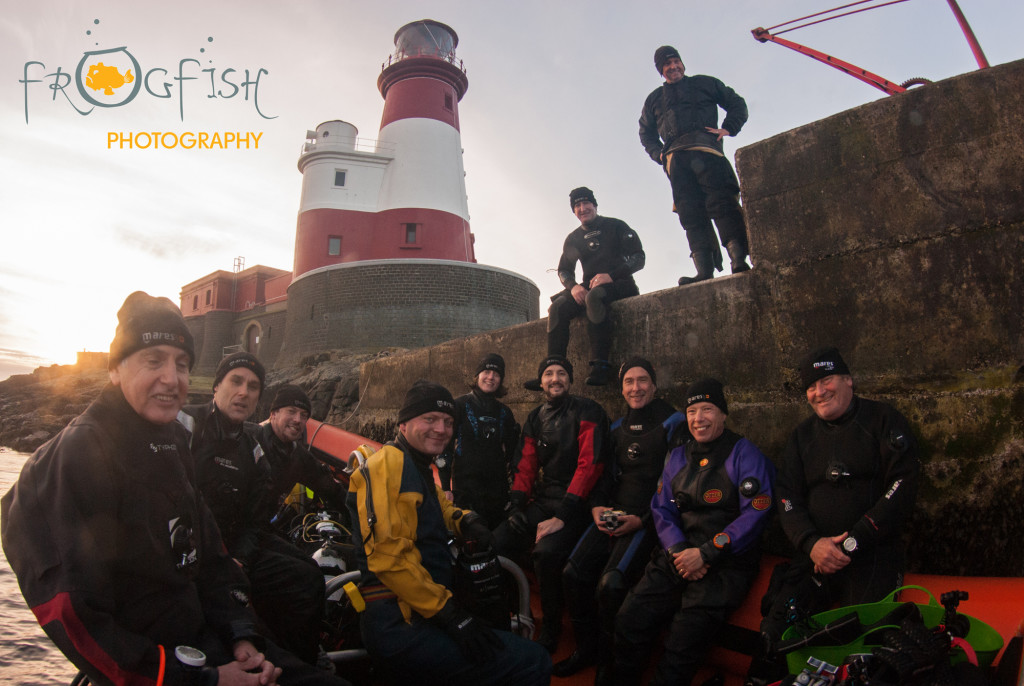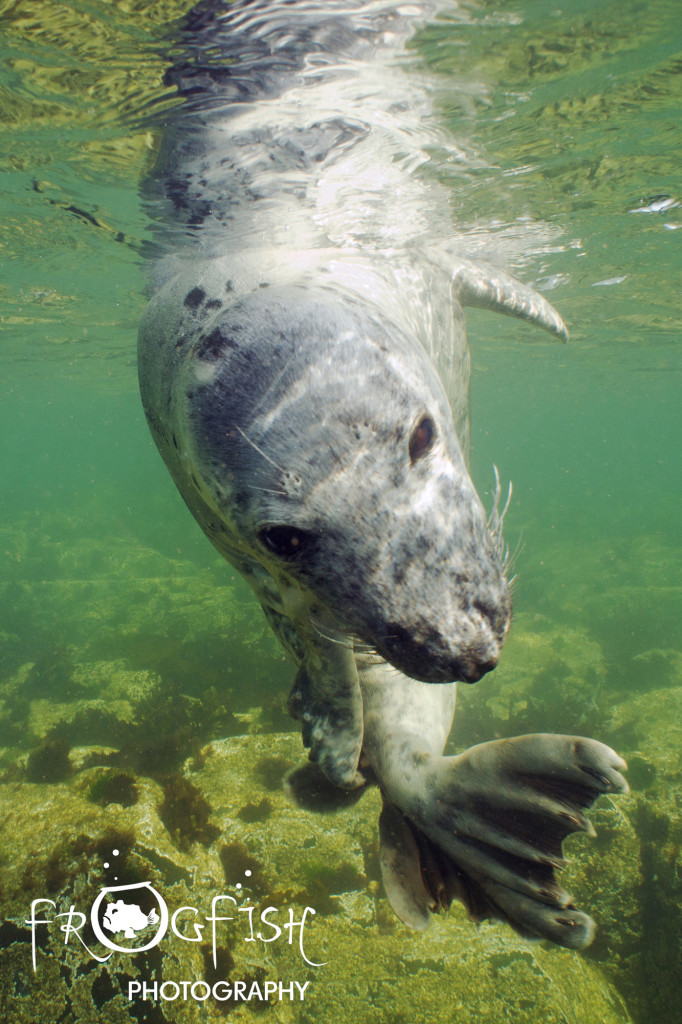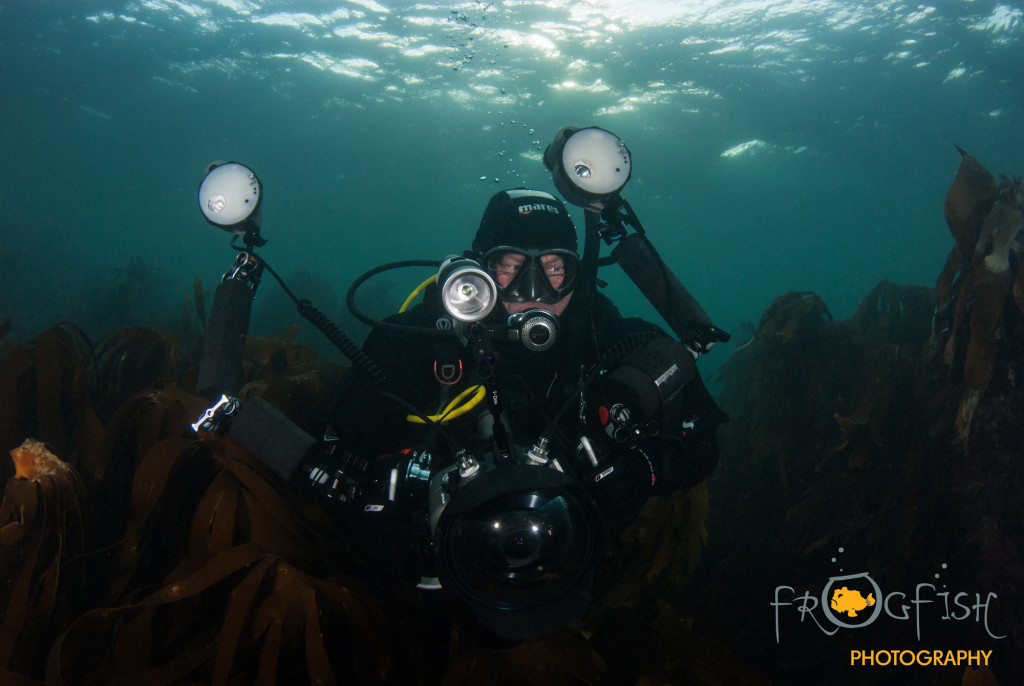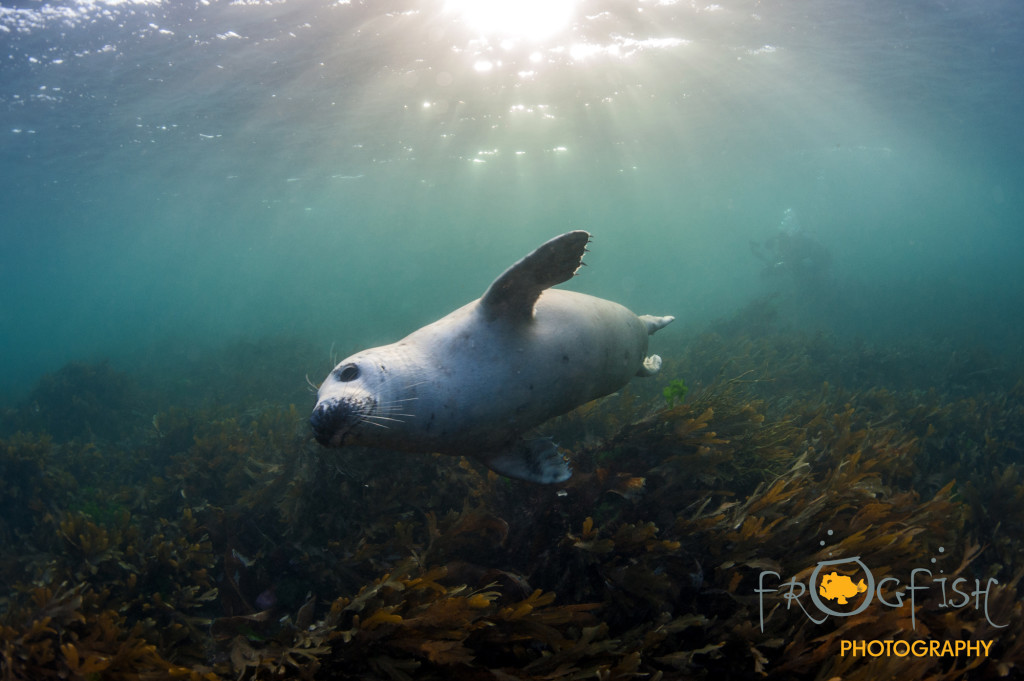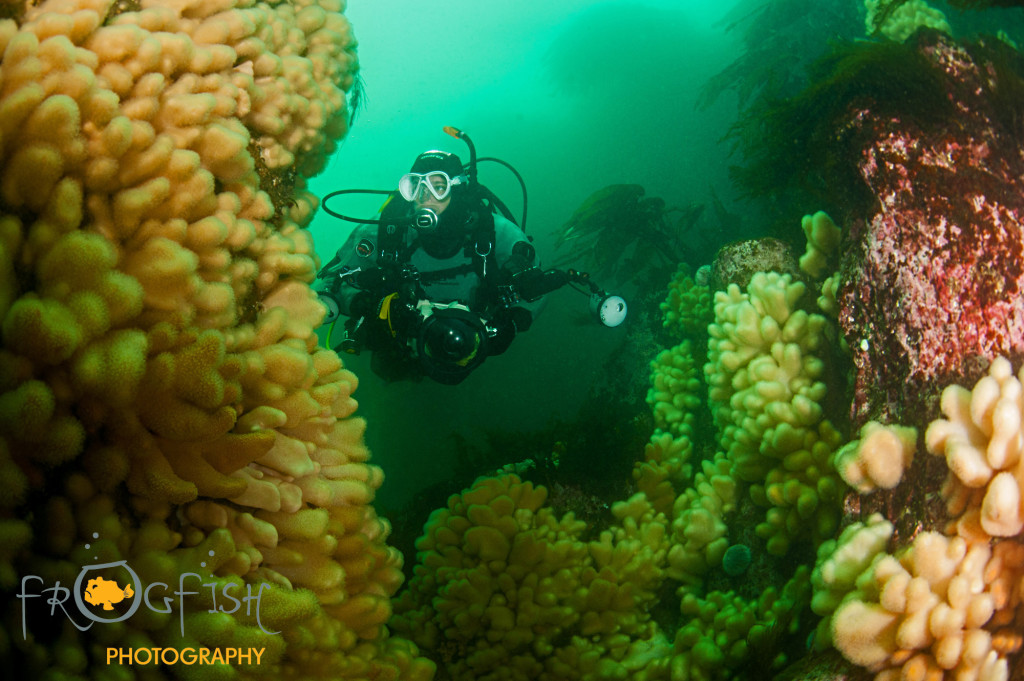News
Amazing Wildlife Encounters: Farne-tastic Diving
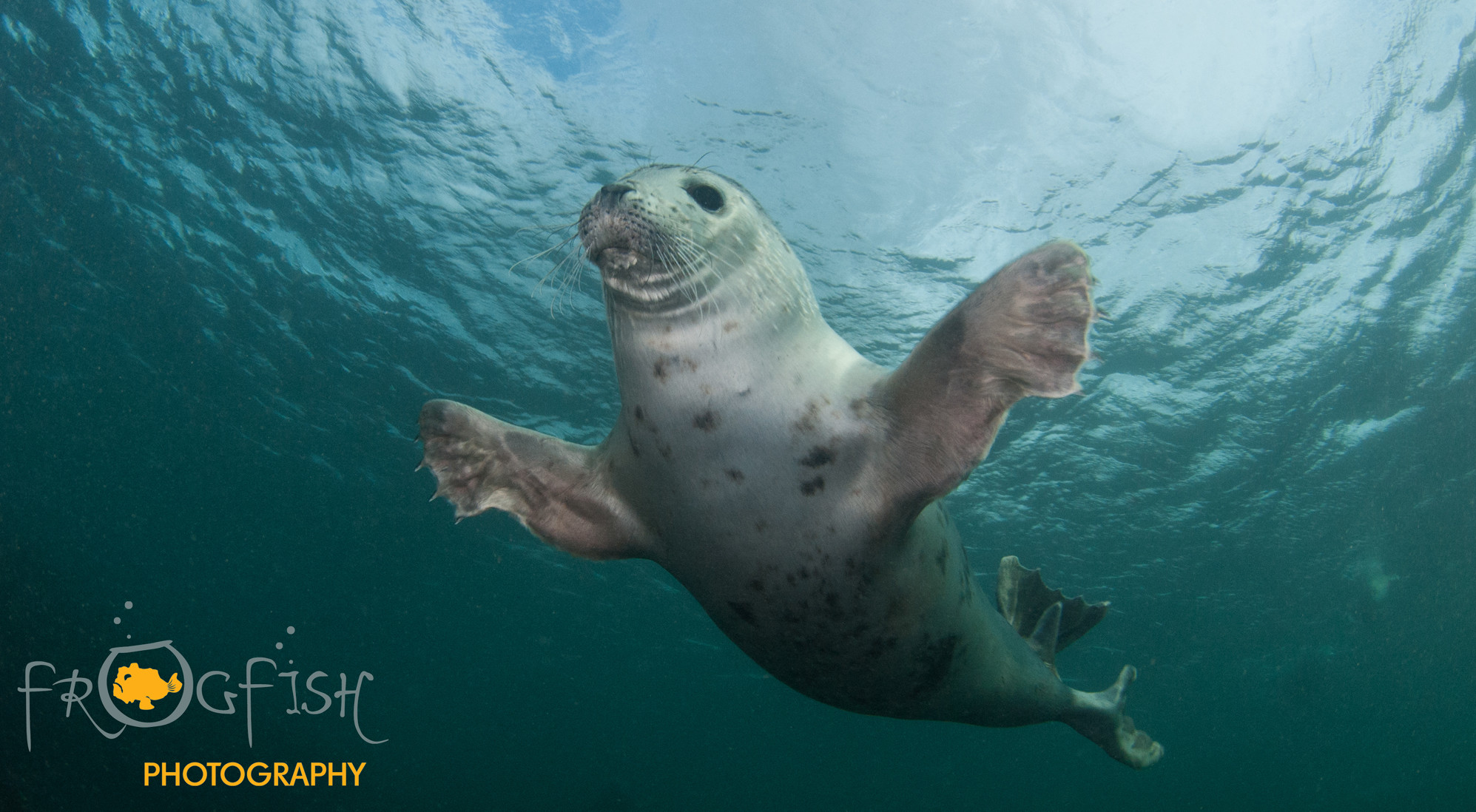
Nick and Caroline Robertson-Brown from Frogfish Photography take a group of divers and underwater photographers to the Farne Islands to dive with some very special British marine life…
The Farne Islands is a remote cluster of rocks and islets found just off the north-east coast of England, 40 miles south of Scotland. The closest town is Seahouses, and it is from this harbour (or Beadnell Bay) that you can set out on the short ride to this amazing outcrop of Northumberland. There are some 20 islands (although some of these are only visible at low tide) and they are made up of an outer and inner group of islands. They are internationally famous for their wildlife with huge numbers of birds, including puffins, selecting this as their breeding grounds during the summer months. Going ashore on most of these islands is not allowed, in an effort to protect the wildlife living there. Tourists flock to the region and take boat rides to see and photograph the wildlife, and they nearly all come to see the most charismatic of the species residing here – puffins and the seals.
We aim to dive the Farne Islands at least twice every year; once in peak summer season to try to get the best weather, and then also at the end of October to try to be there for the seal pupping season, when over 1000 seals are born each year, and you can get incredible, close-up and intimate underwater encounters with these amazing wild animals. We always take the trip with Paul Walker from Farne Island Divers, who is a great skipper, and has truly expert knowledge of these islands. He has a huge RIB that not only can get us to the dive sites before the slower hard boats arrive, but that can also be manoeuvred much closer in, to where the seals are resting and, of course, to get us to the very best sites. The ability to get right up to the rocks also means that we get to enjoy plenty of the bird life and can spend our surface intervals watching the puffins and other seabirds whilst warming up with a mug of hot soup.
The diving here, however, is not only about the seals, but also offers great marine scenery with gullies lined with hundreds of anemones, juvenile fish and crustaceans hiding amongst the kelp forests and wrecks to explore. Whilst this superb UK diving is not to be overlooked, most importantly to us, it offers our divers and budding photographers the chance to get in, photograph and interact with the local seals. To really enhance the possibility of seeing the seals up close, you need to stay in the relatively shallow water, and so this experience is a great way to get people enthusing about UK diving.
One of our favourite sites is Little Harcar, diving along a small, shallow wall, to a maximum depth of about 10m. Your initial encounter may well be with a larger seal buzzing you, flashing past far too quickly to even raise your camera to try to get off a shot. Gullies in the rock face are a good place to explore, and you will often see the seals playing overhead. Keep going and you will enter a small bay area, and this is where all the serious action happens. It seems to be a place where the seals like to relax in one of the many cracks in the rock, which may have a sleeping seal wedged in for a bit of shut-eye. The young ones are most likely to be awake and up for a bit of fun, and they will follow you for a while, occasionally grabbing your fin, until they pluck up the courage to come around and have a good look at you. This is the sort of UK dive site that can have you staying in the water for well over an hour, regardless of the cool water off the rugged yet beautiful north east coastline. As an underwater photographer, it is, sometimes, hard to know which way to point the camera, when you have 3 or more eager seals vying for your attention.
Our experienced skipper, Paul, always waits until we’re out and on the islands to select the best dive site. Bobbing in the water, close to shore to assess the currents, tides and also whether the seals look like they are in the right frame of mind and are up for a spot of playing about with divers. Just because there are large numbers of seals lying about on the island doesn’t mean they are in the mood for swimming with humans. Most of the islands will have a group of seals, hauled up on the shore for a spot of R & R, often after they have been out on a hunting expedition; but when approached by a boat, many will dive into the water and then pop up their heads to look at you inquisitively. When you have lots of seals in the water, all looking at the boat, as if to ask when you might be getting in, you sort of get the feeling that it is going to be a good dive.
On our most recent trip, the weather looked like it might ruin our final day of diving, with large waves beating up onto shore, but Paul found us an amazing and very sheltered spot, and as he manoeuvred the boat into position, what look like at least 100 seal heads popped up out of the water, pleading with those puppy dog eyes for you to come and play. Our skipper still seemed a little dubious about the dive; “It’s only 4-5m deep here and you will have to stay away from that channel only 15 m away, which has a 5 knot current ripping through it. Are you sure you want to dive here?” Came the question from our skipper. The response was inevitable. “Too right,” came the reply as all 10 of us started scrambling into our dive gear. It was one of the best days diving we have ever had in the Farne Islands. The sun was shining and we were in shallow water, with playful seals and beautiful scenery. As underwater photographers, particularly, there is not a better dive anywhere in the UK, and possibly further afield too when it is like this!
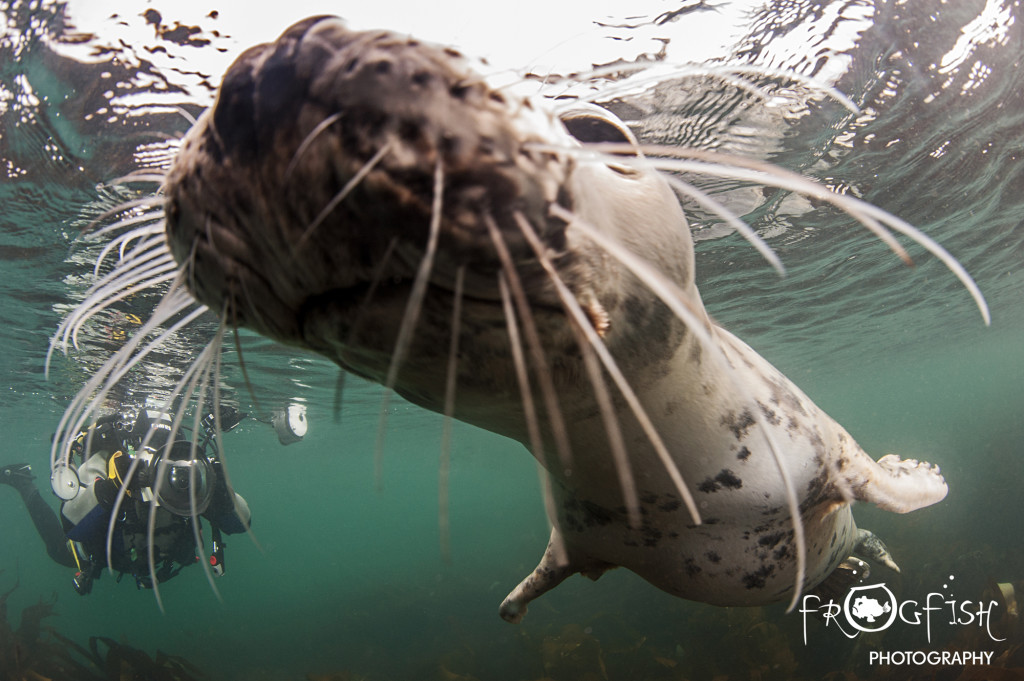
Two photographers get in close for a shot of this young seaBack on land, there is plenty to do in the area, with the imposing profile of Bamburgh castle visible on the horizon just along the coast, and you can also visit Lindisfarne when the tides are right for making the crossing along the causeway. After a day of excitement, diving in playing with his endearing creatures, most chose to sit and select from a great line-up of real ales served at The Ship Inn overlooking the harbour and the sea wall.
To find out more about Farne Island Divers, visit www.farneislanddivers.co.uk.
To find out more about Frogfish Photography and the courses and trips they offer, visit www.frogfishphotography.com.
Blogs
Northern Red Sea Reefs and Wrecks Trip Report, Part 2: Wall to Wall Wrecks

Jake Davies boards Ghazala Explorer for an unforgettable Red Sea diving experience…
The second day’s diving was a day full of wreck diving at Abu Nuhas, which included the Chrisoula K, Carnatic, and Ghiannis D. The first dive of the day was onto the Chrisoula K, also known as the wreck of tiles. The 98m vessel remains largely intact where she was loaded with tiles which can be seen throughout the hold. The stern sits at 26m and the bow just below the surface. One of the highlights of the wreck is heading inside and seeing the workroom where the machinery used for cutting the tiles are perfectly intact. The bow provided some relaxing scenery as the bright sunlight highlighted the colours of the soft coral reef and the many reef fish.

Following breakfast, we then headed to the next wreck, which was the Carnatic. The Carnatic is an 89.9m sail steamer vessel that was built in Britain back in 1862. She ran aground on the reef back in 1869 and remains at 27m. At the time, she was carrying a range of items, including 40,000 sterling in gold. An impressive wreck where much of the superstructure remains, and the two large masts lay on the seafloor. The wooden ribs of the hull provide structures for lots of soft corals, and into the stern section, the light beams through, bouncing off the large shoals of glass fish that can be found using the structure as shelter from the larger predators that are found outside of the wreck.

The final wreck at Abu Nuhas was the Ghiannis D, originally called ‘Shoyo Maru,’ which was 99.5m long and built in Japan back in 1969 before becoming a Greek-registered cargo ship in 1980. The ship then ran aground on the reef on April 19th, 1983, and now sits at the bottom at a depth of 27m. Heading down the line, the stern of the ship remains in good condition compared to the rest of the hull. The highlight of the wreck, though, is heading into the stern section and down the flights of stairs to enter the engine room, which remains in good condition and is definitely worth exploring. After exploring the interior section of the ship, we then headed over to see the rest of the superstructure, where it’s particularly interesting to see the large table corals that have grown at the bow relatively quickly considering the date the ship sank. After surfacing and enjoying some afternoon snacks, we made sure everything was strapped down and secured as we would be heading north and crossing the Gulf of Suez, where the winds were still creating plenty of chop.

The next morning, it was a short hop to Ras Mohammed Nature Reserve for the next couple of days of diving. The 6am wake-up call came along with the briefing for the first site we would be diving, which was Shark & Yolanda. The low current conditions allowed us to start the dive at Anemone City, where we would drift along the steep, coral-filled wall. These dives involved drifts, as mooring in Ras Mohammed wasn’t allowed to protect the reefs. As a dive site, Shark & Yolanda is well-known and historically had a lot of sharks, but unfortunately not so many in recent years, especially not so early in the season. However, there was always a chance when looking out into the blue.

The gentle drift took us along the steep walls of the site, with plenty of anemone fish to be seen and a huge variety of corals. It wasn’t long into the dive before we were accompanied by a hawksbill turtle, who drifted with us between the two atolls before parting ways. Between the two reefs, the shallow patch with parts of coral heads surrounded by sand provided the chance to see a few blue-spotted stingrays that were mainly resting underneath the corals and are always a pleasure to see. With this being the morning dive, the early sunlight lit up the walls, providing tranquil moments. Looking out into the blue, there was very little to be seen, but a small shoal of batfish shimmering underneath the sunlight was a moment to capture as we watched them swim by as they watched us.

Towards the end of the dive, we stopped at the wreck of the Jolanda where the seafloor was scattered with toilets from the containers it was carrying. This provided a unique site to make a safety stop, which was also accompanied by a large barracuda slowly swimming by, along with a hawksbill turtle calmly swimming over the reef as the sun rays danced in the distance.
For the next dive, we headed north to the Strait of Tiran to explore the reefs situated between Tiran Island and Sharm El Sheik, which were named after the British divers who had found them. We started on Jackson before heading to Gordons Reef, where we also did the night dive. All the atolls at these sites provided stunning, bustling coral reefs close to the surface and steep walls to swim along, which always provided the opportunity to keep an eye out for some of the larger species that can be seen in the blue. Midwater around Jackson Reef was filled with red-toothed triggerfish and shoals of banner fish, which at times were so dense that you couldn’t see into the blue. Moments went by peacefully as we enjoyed the slow drift above the reef, watching these shoals swim around under the mid-afternoon sun.

The night dive at Gordon’s Reef was mainly among the stacks of corals surrounded by sand, which was great to explore under the darkness. After some time circling the corals, we came across what we were really hoping to find, and that was an octopus hunting on the reef. We spent the majority of the dive just watching it crawl among the reef, blending into its changing surroundings through changes in colour and skin texture. It’s always so fascinating and captivating to watch these incredibly intelligent animals, in awe of their ability to carry out these physical changes to perfectly blend into the reef. Before we knew it, it was time to head back to the boat to enjoy a well-deserved tasty dinner prepared by the talented chefs onboard.
Check in for the 3rd and final part of this series from Jake tomorrow!
To find out more about the Northern Red Sea reef and wrecks itineraries aboard Ghazala Explorer, or to book, contact Scuba Travel now:
Email: dive@scubatravel.com
Tel: +44 (0)1483 411590
Photos: Jake Davies / Avalon.Red
Marine Life & Conservation
Double Bubble for Basking Sharks

 The Shark Trust is excited to announce that, for two more days only, all donations, large or small, will be doubled in the Big Give Green Match Fund!
The Shark Trust is excited to announce that, for two more days only, all donations, large or small, will be doubled in the Big Give Green Match Fund!
Donate to Basking in Nature: Sighting Giants
The Shark Trust is hoping to raise £10k which will be doubled to £20k. This will go towards Basking in Nature: Sighting Giants. And they need YOUR help to reach they’re goal.
The Shark Trust’s citizen science project is to monitor and assess basking sharks through sightings; encouraging data collection, community engagement, and promoting nature accessibility. This initiative aims to enhance health and wellbeing by fostering a deeper connection with British Sharks.
Campaign Aims
- Increase citizen science reporting of Basking Sharks and other shark sightings to help inform shark and ray conservation.
- Provide educational talks about the diverse range of sharks and rays in British waters and accessible identification guides!
- Create engaging and fun information panels on how to ID the amazing sharks and rays we have on our doorstep! These can be used on coastal paths around the Southwest. With activities and information on how you can make a difference for sharks and rays!
- Promote mental wellbeing through increasing time in nature and discovering the wonders beneath the waves!
Donate, and double your impact. Click Here
-

 News3 months ago
News3 months agoHone your underwater photography skills with Alphamarine Photography at Red Sea Diving Safari in March
-

 News3 months ago
News3 months agoCapturing Critters in Lembeh Underwater Photography Workshop 2024: Event Roundup
-

 Marine Life & Conservation Blogs2 months ago
Marine Life & Conservation Blogs2 months agoCreature Feature: Swell Sharks
-

 Blogs2 months ago
Blogs2 months agoMurex Resorts: Passport to Paradise!
-

 Blogs2 months ago
Blogs2 months agoDiver Discovering Whale Skeletons Beneath Ice Judged World’s Best Underwater Photograph
-

 Gear Reviews2 months ago
Gear Reviews2 months agoGear Review: Oceanic+ Dive Housing for iPhone
-

 Marine Life & Conservation2 months ago
Marine Life & Conservation2 months agoSave the Manatee Club launches brand new webcams at Silver Springs State Park, Florida
-

 News3 months ago
News3 months agoWorld’s Best Underwater Photographers Unveil Breathtaking Images at World Shootout 2023


